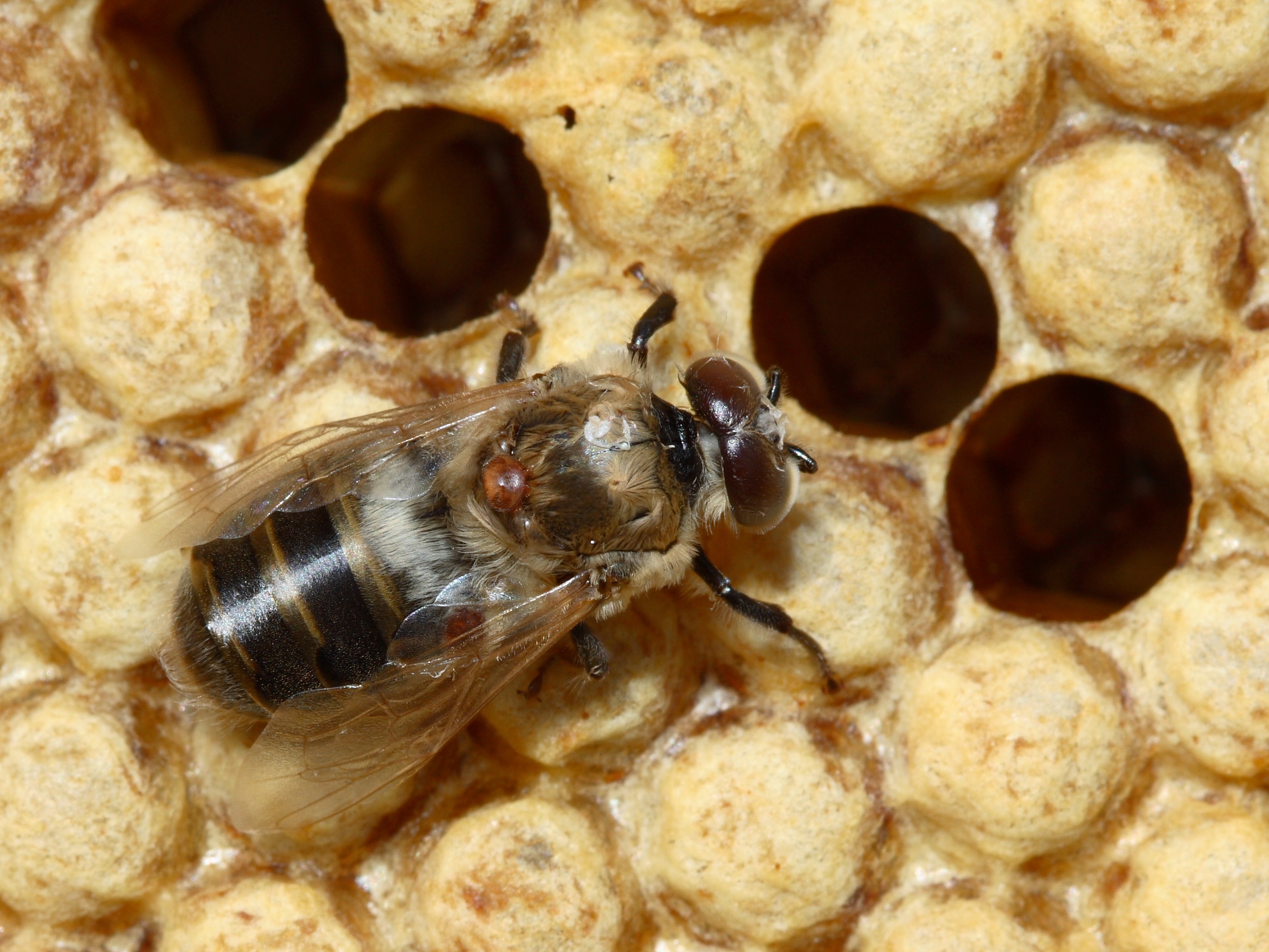By now, everyone has heard of the catastrophic losses to
honeybee populations due to a phenomenon known as ‘colony collapse disorder’.
While environmental factors such as pollution and pesticides have been
implicated, one of the leading causes is probably infection by a parasitic mite
named Varroa destructor.
A Varroa destructor
attached to the back of a honeybee
By Waugsberg, 6/3/2007.
Luckily, bees have evolved
some mechanisms for mitigating V. destructor infestations. One such method is called hygienic
behavior (HB). In essence, it involves uncorking infected larvae from their
sealed brood cells and chucking the sick babies out of the hive. However, not
all bees or colonies of bees display the same degree of HB. If apiarists could
breed for greater hygiene activity, they might be able to protect their bees
from colony collapse.
The first step in creating a
resistant bee colony is to find a genetic correlation with HB. To that end, University
of British Columbia entomologists led by Robert Parker examined
protein expression in bees from a variety of hives. They particularly looked at
proteins produced within the antennae of nurse bees. After all, it’s the nurse
bees that handle the larvae, and they presumably use their antennae to
distinguish between the sick and healthy larvae. The researchers also
determined the protein composition within the exoskeletons of larvae, the first
line of attack for mites.

No comments:
Post a Comment